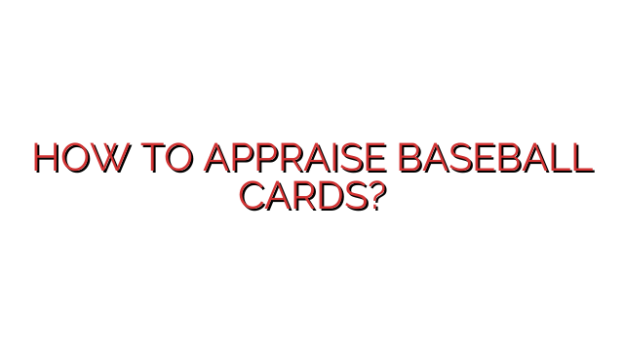There are several factors that go into properly appraising the value of a baseball card. The first step is to identify the card and get as much information about it as possible. This includes things like the player name, year the card was produced, card manufacturer (Topps, Fleer, etc.), series and card number. Knowing these details allows you to properly research comps (completed sales of similar cards) to find an estimated value.
After identifying the basic details, you’ll want to carefully examine the condition or grade of the card. Baseball cards can range drastically in value based on even minor defects or signs of wear. The most objective way to grade cards is using the 1-10 point scale from Professional Sports Authenticators (PSA). A PSA 10 gem mint card in near-perfect centered condition will be far more valuable than even a slightly off-centered PSA 8 very fine card. Taking photos of the front and back under good lighting can help document any flaws, scratches, or centering issues for research purposes.
Looking up recent auction results and sales data of identically graded cards is the best way to find a valuation range. Sites like eBay, Sportscard Forums, and PriceGuides.com allow searching by player, year, brand, and grade. Pay attention to dates of completed auctions, as values can fluctuate over time. It’s important to find comps within the last 6-12 months to account for market trends. Values also differ based on the card’s level of significance and rarity within a given set or year. Iconic rookie cards naturally demand higher prices.
After considering comp data, the next variables are sub-grades for centering, corners, edges and surface (CCES). Minor differences in one of these sub-grades could mean a $20 card or a $200 card, so examine closely. Cards with strong corners and edges often gain value compared to rounded or damaged copies. Surface flaws like scratches may decrease a cards grade and therefore price. Flagship sets like Topps tend to carry more value than regional or insert sets produced the same year.
Taking the card out of any magnetic holders or sleeves allows you to thoroughly check all surfaces with proper lighting. A jeweler’s loupe can magnify tiny defects not visible to the naked eye. Document any issues – even superficial ones can justify a lower assigned grade and valuation. Beyond condition, some cards have premiums for autographs, memorabilia relics, or special printing techniques like refractors or negatives. Account for premiums on top of raw condition value.
After inspecting the card and gathering recent comps of equivalently graded versions, come to an estimated value range based on various scenarios. For true appraisal purposes looking to establish insurance values, take conservative estimates toward the lower end or midpoint of seen comp prices. Always disclose comps used and note any conditions noticed during inspection that may diminish or enhance the card’s “true grade” versus an assumed PSA or other third party grade. Without professional grading, condition assessments are subjective.
With high-value collectibles, it’s also smart to consult with experienced dealers and authenticators whenever possible. Not only will they know markets thoroughly and help establish realistic value expectations, but their expert opinions can confirm authenticity and catch potential forgeries or re-creations that the untrained eye may miss. Appraising baseball cards takes diligent research of specifics, recent sales, sub-grades, and consultation with pros whenever substantial value is involved. Condition is paramount, so handle cards carefully throughout the entire inspection process.





I have a 1938 official American League schedule is mint condition. How much is it worth?
The value of a 1938 official American League schedule in mint condition can vary based on several factors, including its rarity and demand among collectors. While specific listings for a 1938 American League schedule were not found in the search results, we can look at related items to gauge potential worth.
Similar Items:
Vintage baseball programs and scorecards from 1938 are listed on platforms like eBay, with prices ranging from about $22 to over $450, depending on the specific item and its condition. For example, a 1938 Chicago Cubs World Series program is priced at $450, while other scorecards and programs range from $50 to $210.
A 1938 Yankees vs. Philadelphia scorecard is listed for $210, indicating that items from this era can command significant prices if they are in excellent condition.
Condition:
Since you mentioned that your schedule is in mint condition, this could significantly increase its value. Mint condition items are typically more sought after by collectors, which can lead to higher prices.
Market Trends:
The market for vintage sports memorabilia, including baseball schedules, has been strong, with collectors willing to pay premium prices for rare and well-preserved items.
Based on these factors, if your 1938 official American League schedule is indeed in mint condition, it could potentially be valued anywhere from $100 to several hundred dollars, depending on collector interest and market conditions.
For a more precise valuation, consider consulting with a sports memorabilia appraiser or checking auction results for similar items.